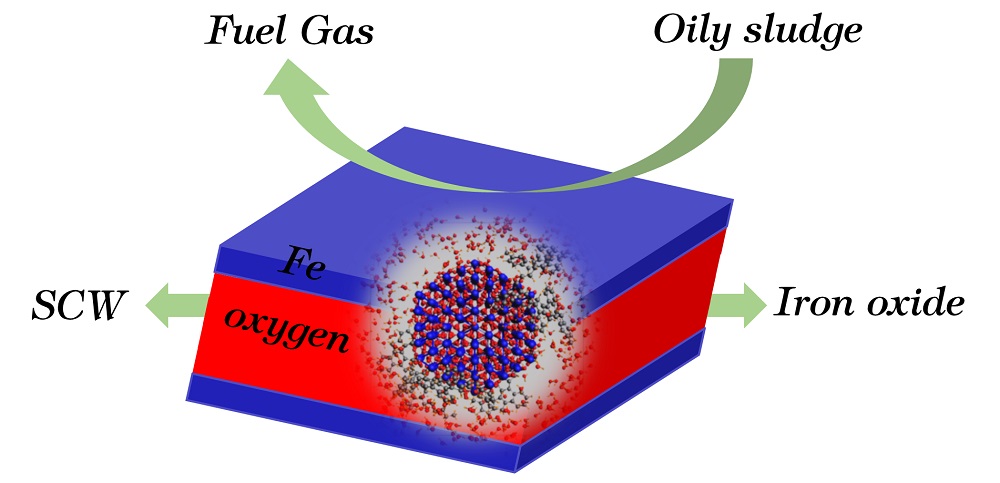Firstly, Fe
2O
3 cluster undergoes a surface reconstruction process in the initial stage of the reaction, as shown in Fig. 2. Free carbon fragments from asphaltene molecules get close gradually and adsorb on the catalyst surface through C–O bond, causing the dehydrogenation of the terminal hydroxyl. Then, the group adsorbed on the surface of the catalyst exhibits a reaction of reforming, adsorption formation turning into Fe–C rather than C–O bond, which makes two hydroxyls adsorbed on the C atom. Obviously, the structure of OH–C–OH formation is unstable and will be converted into other substances immediately, such as aldehydes and ketones. With the removal of H
2O molecule from the unstable group forming a ketone group, C atom would capture the active lattice oxygen of the surface subsequently and diffuses into the system to form CO
2 molecule through the cleavage of Fe–O bond finally. Moreover, small carbon fragments adsorbed on the surface of Fe
2O
3 cluster bonded with the active lattice oxygen produce not only CO
2 molecules, but also CO molecules in the similar path. In sum, the free carbon fragments bond with the active lattice oxygen on the surface of the Fe
2O
3 cluster generating small amounts of CO and CO
2 molecules in the initial stage of the reaction, causing more Fe active sites with unsaturated coordination to be exposed on the surface compared to the original, which accelerate the catalytic degradation of asphaltene molecules into small molecular compounds. Secondly, the formation of asphaltene molecule adsorbed on the surface with Fe–C bonds is transformed from vertical to parallel after the surface construction, and the aromatic ring becomes unstable to further convert into short straight chains or small molecules under the catalysis of Fe
2O
3 in the next period of time. Interestingly, the carbon fragments adsorbed on Fe sites could destroy the alignment of the surface to create vacancy defects, contributing to the C diffusion into the inside, which can be seen in Fig. 3. And Bentria etal. [
37] investigated the carburization mechanisms from the surface to bulk of Fe, and found that the C atoms of carbide adsorbed on the surface diffused to the body, indicating the C atoms moved from a lower coordinated environment to a higher coordinated stage, which shows consistently with our results of catalyst carburization. Finally, Fig. 4 shows the migration of inside lattice oxygen into H
2O molecules, which does not mean that the inside lattice oxygen generates H
2O molecules only, and the generation of H
2O molecule is took an example to show the change of crystal morphology. The inside lattice oxygen migrates to the surface of the cluster under the effects of hydroxide radicals adsorbed on Fe atoms with Fe–O bonds, which are generated by SCW, and the carbon fragments. Subsequently, H radicals from SCW bond with the lattice oxygen to generate H
2O molecule, while the two hydroxide radicals adsorb on the Fe sites. It is obvious that the migration of lattice oxygen is confirmed in the Fe
2O
3 catalytic system during SCWG process. Accordingly, the three reactions mentioned above are the main reasons for the changes in the crystal morphology of the Fe
2O
3 catalyst, and the specific morphologies of fresh and used are shown in Fig. S3 (cf. ESM).













